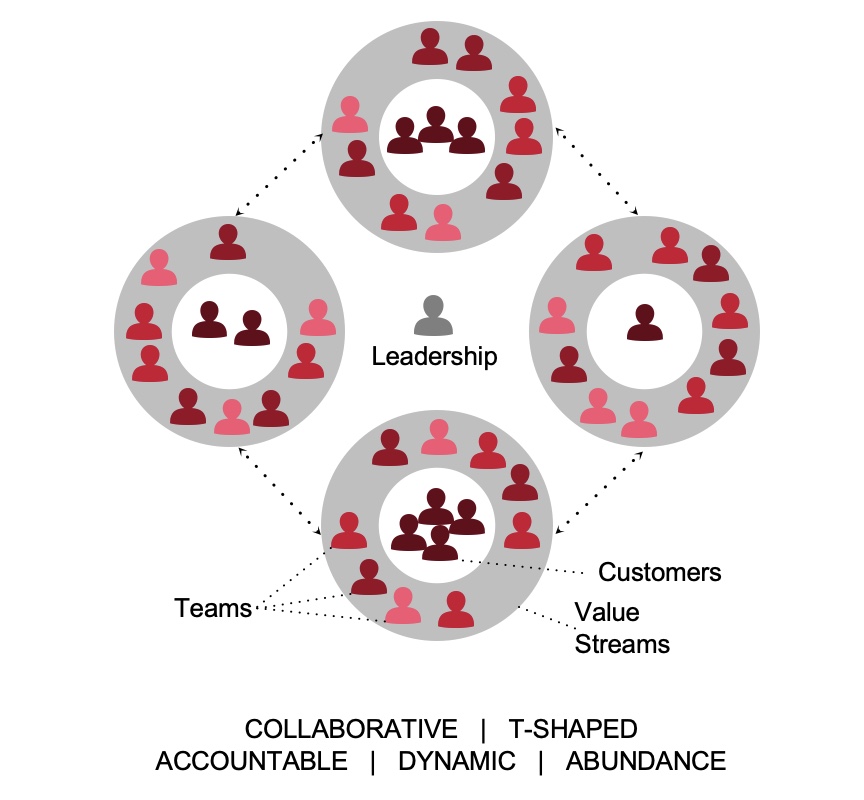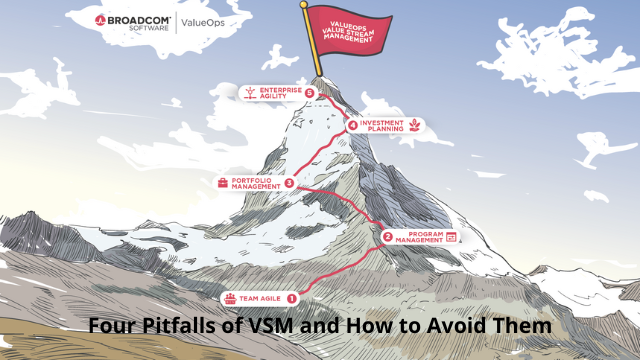
Value Stream Management
Value Stream Management
Value Stream Management is a critical aspect of lean operations and plays a vital role in the success of agile product development and delivery. By determining the measurable flow of value, Value Stream Management allows you to identify areas where value delivery is slowed down and create opportunities for better alignment and collaboration among teams. To effectively manage your value stream, it is important to understand the impact of Value Stream Management and the consequences of not properly managing it. This article will delve into the basics of value stream management and mapping, as well as provide insights into how to measure the value of your value stream management efforts. Whether you are already implementing value stream management or considering adopting this mindset, this article will provide you with the information you need to avoid hidden pitfalls and maximize the benefits of managing your value stream effectively.
Speak to MCTC today about our consultancy advice and training packages.
Value Stream Management
Introduction
Value Stream Management (VSM) is a crucial aspect of lean operations and plays a significant role in the success of agile product development and delivery. It involves determining the measurable flow of value, identifying areas where value delivery is slowed down, and creating opportunities for better alignment and collaboration among teams. In this article, we will explore the definition, importance, benefits, and pitfalls of Value Stream Management.
Definition and Importance
Value Stream Management can be defined as the process of mapping, analyzing, and optimizing the flow of value through a product or service. It helps organizations understand their end-to-end value creation process, from the initial customer demand to delivering the final product or service. By visualizing and analyzing the value stream, organizations can identify inefficiencies, bottlenecks, and waste, thus improving overall performance.
The importance of Value Stream Management lies in its ability to enhance agility and efficiency in an organization. By eliminating non-value-added activities and streamlining processes, teams can deliver value more quickly and effectively. VSM also promotes better collaboration and alignment among teams, as everyone gains a shared understanding of how their work contributes to the overall value stream.
Furthermore, Value Stream Management is closely linked to agile product development and delivery. Agile methodologies focus on iterative and incremental development, frequent customer feedback, and continuous improvement. VSM enables organizations to apply agile principles and practices across the entire value stream, ensuring that all stages of product development and delivery are aligned and optimized for efficiency and quality.

Benefits of Value Stream Management
Determining Measurable Flow of Value
One of the key benefits of Value Stream Management is its ability to provide a clear and measurable view of the flow of value. By mapping out the entire value stream, organizations can identify key metrics and indicators to track and measure their performance. This enables teams to have a comprehensive understanding of how value is created, delivered, and improved.
Identifying Bottlenecks and Slow Value Delivery
Through Value Stream Management, organizations can pinpoint bottlenecks and areas where value delivery is slow or inefficient. By visualizing the value stream and analyzing data, teams can identify process inefficiencies, delays, and waste. This allows them to focus on improving those areas, reducing lead times, and accelerating value delivery.
Opportunities for Alignment and Collaboration
Value Stream Management promotes better alignment and collaboration among teams. By involving all relevant stakeholders in the value stream mapping process, organizations can ensure that everyone has a shared understanding of how their work contributes to the overall value stream. This alignment leads to improved coordination, reduced silos, and enhanced collaboration across teams, resulting in better overall performance and customer satisfaction.
Driving Continuous Improvement
Another significant benefit of Value Stream Management is its ability to drive continuous improvement. By regularly reviewing and updating the value stream map, organizations can identify areas for optimization and implement improvements. This iterative approach to improvement ensures that the organization is constantly evolving and adapting to changing customer needs and market conditions.

This image is property of b2b-contenthub.com.
Pitfalls of Value Stream Management
Lack of Clear Value Stream Mapping
One of the pitfalls of Value Stream Management is the lack of clear and accurate value stream mapping. In order to effectively manage the value stream, it is essential to have a comprehensive and accurate understanding of the current state of the value stream. Failure to capture and visualize all relevant processes and activities can lead to incomplete or ineffective improvement efforts.
Failure to Regularly Review and Update
Value Stream Management requires regular review and updates to ensure its effectiveness. Without ongoing assessment and continuous improvement, organizations may miss out on opportunities to optimize their value stream. It is important to regularly revisit the value stream map, analyze performance metrics, and identify areas for improvement.
Inadequate Metrics and Tracking
Another pitfall of Value Stream Management is the use of inadequate metrics and tracking methods. To effectively manage the value stream, organizations need to establish and track key metrics that align with their strategic goals. Inaccurate or inconsistent tracking can lead to incorrect assessments of performance and hinder the organization’s ability to make data-driven decisions.
Limited Organizational Buy-In
For Value Stream Management to be successful, it is crucial to obtain buy-in from all levels of the organization, especially leadership. Lack of support and involvement from key stakeholders can undermine the effectiveness of Value Stream Management initiatives. It is important to communicate the benefits and success stories of VSM, build awareness and understanding, and involve stakeholders from the start.
Incomplete Implementation of Agile Principles
While Value Stream Management is closely linked to agile product development and delivery, organizations may struggle with the incomplete implementation of agile principles. Without a holistic agile mindset and practices, teams may struggle to fully leverage the benefits of Value Stream Management. It is important to align VSM with agile methodologies and ensure that the entire organization embraces agile principles.

This image is property of cdn.brighttalk.com.
Conclusion
Value Stream Management is a critical aspect of lean operations and agile product development and delivery. By effectively managing the flow of value, organizations can achieve improved efficiency, better alignment, and continuous improvement. However, it is important to be aware of the pitfalls of Value Stream Management and take proactive steps to avoid them. With a clear understanding of the definition, importance, benefits, and potential pitfalls of Value Stream Management, organizations can successfully leverage this approach to drive their success in today’s fast-paced and competitive business environment.
